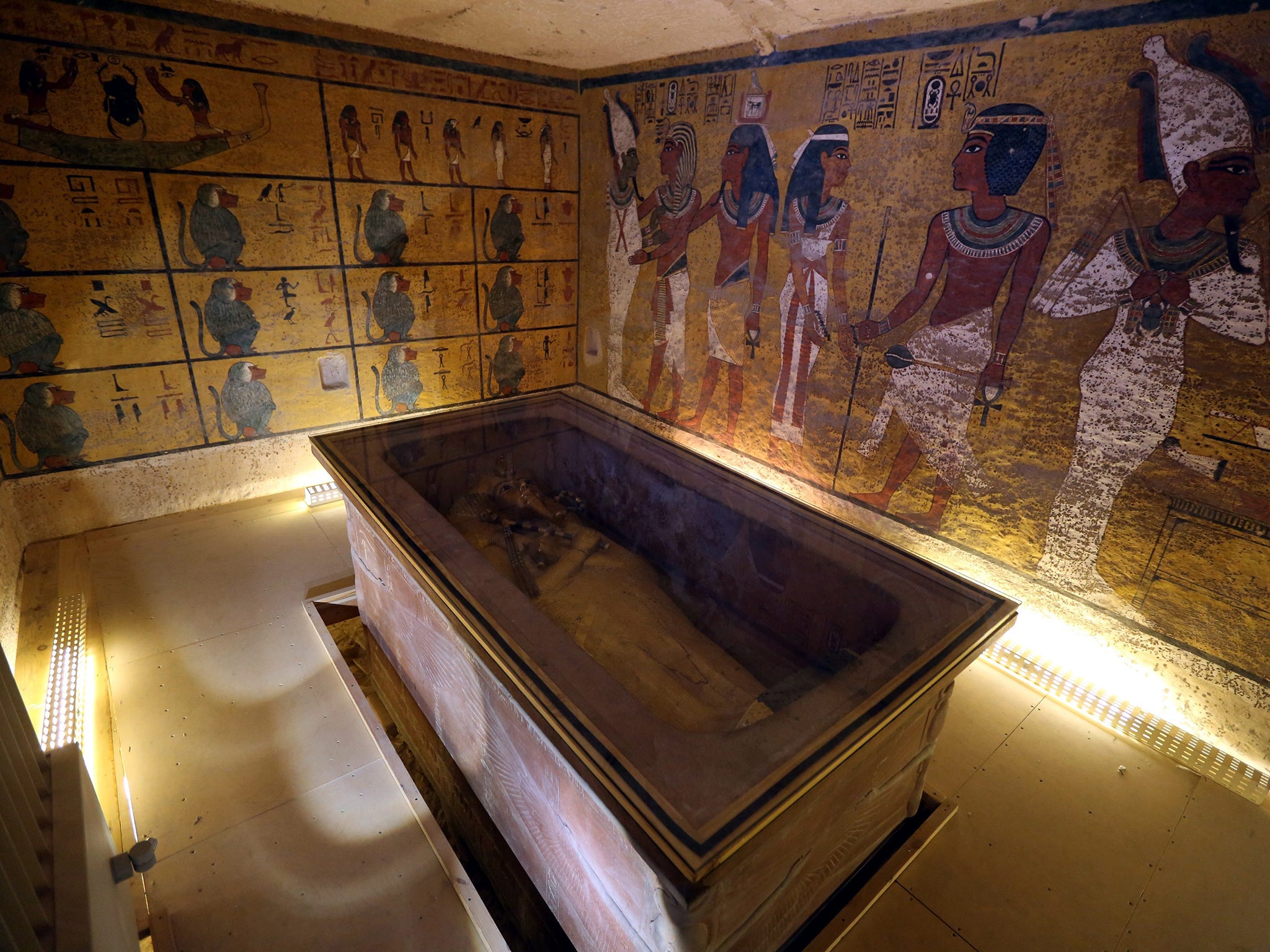The dramatic theory, published in a paper by Nicholas Reeves of the University of Arizona, is based on an analysis of detailed scans of Tutankhamun’s tomb. The scans reveal the texture of walls beneath their layers of paint, and Reeves believes he found a number of cracks indicating two previously concealed doors.
One of these doors would possibly lead to a storeroom, Reeves said. But the larger door on the north side of the burial chamber, he suggests, could lead to another room holding the remains of Nefertiti, believed by some to be the mother of Tutankhamun.

“I have been testing the evidence ever since, looking for indications that what I thought I was seeing was, in fact, not there,” Reeves told the BBC. “But the more I looked, the more information I found that I seemed to be looking at something pretty real.”
Archaeologists have expressed cautious excitement over Reeves’s conclusion, although they have yet to embrace it fully, as expected. The theory would take many more tests to confirm, although a radar scan could quickly reveal any hollows, an archaeologist told the Economist.
“If I’m wrong, I’m wrong,” Reeves said to the Economist. “But if I’m right this is potentially the biggest archaeological discovery ever made.”
The tomb of Tutankhamun has been a puzzle for archaeologists ever since archaeologist Howard Carter famously discovered it in 1922. It is comprised of four rooms, but it’s much smaller than those of other pharaohs. Scientists have also found that it was constructed and decorated in stages.
Carter first found it filled with thousands of priceless treasures — safe from the tomb robbers who ravaged items found in other chambers because of how well it was hidden.
To find Nefertiti would be a huge win for archaeologists, and may be able to solve some of the mysteries of King Tut’s tomb. The queen, famed for her beauty and her uniquely realistic bust at the Egyptian Museum of Berlin, served as co-regent to King Akhenaten, her husband, and may have been a pharaoh after his death. That means the contents of her tomb, if it exists, would be just as fantastic as Tutankhamum’s — perhaps even more fantastic.
Tutankhamun is believed to have only ruled for nine years, taking power only as a young boy. His remains show that he was a frail child, with buck teeth and a pronounced overbite. Thanks to rounds of royal inbreeding, he had a club foot and could only walk with a cane.
His reign was overshadowed by much more prominent pharaohs, including Ramses II, Khufu and his father Akhenaten. Still, the magnificence of the treasures found in his tomb has made it one of the most celebrated archaeological finds in the world. His famous gold funeral mask — which mysteriously depicts him more femininely than other pharaohs — is considered one of the most recognized artifacts ever.
But there’s another aspect of Egyptian archaeology that’s captured the public beyond the treasures: a mystical ancient religion, drenched in symbolism and striking imagery of the afterlife.
Burial customs for Egyptians were elaborate ways to ensure immortality after death, which is why bodies were preserved through mummification and laid in tombs with their riches and belongings. Their organs were removed and preserved separately in jars, and families were expected to bring food to the tombs after the burial.
There are rumors of the “Pharaoh’s Curse,” which brings bad luck to those who disturb the tombs. Twelve members of Carter’s team that opened Tutankhamun’s tomb died within seven years, including the Earl of Carnarvon, who financed the excavation, the New York Times reported in Carter’s obituary in 1939.
Carter himself died of lymphoma in his home in London, but the stories were enough to dissuade the superstitious Benito Mussolini from accepting a mummy as a gift.
There’s also the bizarre story of Dorothy Louise Eady, who served as a researcher at the Department of Egyptian Antiquities. Eady, better known as Omm Sety, openly believed that she was an ancient Egyptian priestess in a past life who had been reincarnated in the modern age.
Her beliefs, detailed in a number of biographies, were supposedly awakened in her after falling down stairs at 3 years old. She grew up dreaming about her experiences in ancient Egypt, and eventually moved to Egypt to become close friends with a number of prominent archaeologists. She made a number of Egyptological discoveries based on what she said were memories, not research.
At one point, she reportedly said she knew where the tomb of Nefertiti was located based on a conversation in another life with a pharaoh, according to a biography titled “Omm Sety’s Egypt.”
“It’s in the Valley of the Kings, and it’s quite near to the Tutankhamun tomb,” she said, according to the biography. “But it’s in a place where nobody would ever think of looking for it. And apparently it is still intact.”
Eady died in 1981 at the age of 77.





